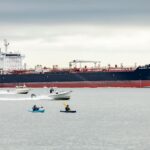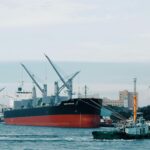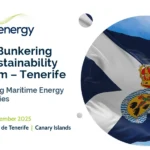Oil spill prevention and response

Oil spill prevention and response is a critical issue that requires constant attention and vigilance. The impact of an oil spill can be devastating to the environment, the economy, and public health. Therefore, it is essential to have effective prevention measures in place, as well as a robust response plan to minimize the damage.
Prevention measures must be taken by companies involved in oil production and transportation to avoid spills. This can be achieved through regular maintenance of equipment and pipelines, ensuring that safety protocols are in place and followed, and implementing technology to detect and respond quickly to leaks or spills. As the saying goes, “an ounce of prevention is worth a pound of cure.” Preventing spills from occurring in the first place is the most effective way to minimize their impact.
When prevention measures fail, the response must be swift and effective. The first step is to contain the spill to prevent it from spreading further. This is done through the use of booms, barriers, and other physical barriers. The next step is to clean up the spill, which can be done using a combination of mechanical, chemical, and biological methods.
One of the most important aspects of oil spill prevention and response is coordination between various stakeholders. This includes government agencies, oil companies, local communities, and environmental organizations. Effective communication and cooperation are essential to ensure that the response is effective and that all parties are informed and involved.
In the words of former Secretary of the Interior Sally Jewell, “Preventing and responding to oil spills requires a coordinated effort between government, industry, and local communities. We all have a role to play in protecting our environment and ensuring that our natural resources are not damaged.”
The importance of prevention measures
Oil spill prevention is crucial because once a spill occurs, the damage can be extensive and long-lasting. Prevention measures can take many forms, including regular maintenance of equipment and pipelines, implementing safety protocols, and using technology to detect and respond to leaks quickly. According to the American Petroleum Institute, “Prevention is the foundation of the oil and natural gas industry’s environmental and safety performance.”
Prevention measures can also be cost-effective in the long run. According to a study by the National Research Council, “Prevention is much less expensive than cleanup and recovery. Preventing a spill is generally 10 to 100 times less expensive than cleaning up after a spill.”
Technology for detecting and responding to spills
Technology has played a significant role in oil spill prevention and response. For example, pipeline monitoring systems can detect leaks and notify operators of potential problems before a spill occurs. Satellite imaging can also be used to detect oil spills and track their movement, allowing for a faster response. Additionally, unmanned aerial vehicles (UAVs) can provide real-time information on the location and extent of spills.

The role of government in oil spill prevention and response
Government agencies play a critical role in oil spill prevention and response. The Environmental Protection Agency (EPA) sets regulations for oil companies and monitors compliance with those regulations. The Department of the Interior’s Bureau of Safety and Environmental Enforcement (BSEE) regulates offshore oil and gas drilling operations to prevent spills.
After a spill occurs, the government’s role is to coordinate the response efforts and ensure that all parties are working together effectively. The National Response Team, which is made up of representatives from various government agencies, is responsible for overseeing the response to spills that occur in U.S. waters. The National Contingency Plan, established by the EPA, outlines the procedures for responding to spills and assigns responsibilities to various agencies.
The impact of oil spills on the environment and public health
Oil spills can have a significant impact on the environment and public health. Oil can harm wildlife, vegetation, and marine ecosystems. It can also contaminate water sources, making them unsafe for consumption. In addition, exposure to oil and its components can pose a health risk to humans, including respiratory and skin irritations, headaches, and nausea.
The long-term effects of oil spills can also be devastating. For example, the 1989 Exxon Valdez spill in Alaska caused significant harm to the local ecosystem, and some species have still not fully recovered over 30 years later. Similarly, the Deepwater Horizon spill in 2010 caused significant damage to marine life and ecosystems in the Gulf of Mexico, and its effects are still being felt today.
The economic consequences of oil spills
Oil spills can also have significant economic consequences. Fishing and tourism industries can be impacted by spills, causing losses in revenue and jobs. The cost of cleanup efforts and compensation for those affected by spills can also be substantial.
According to the National Oceanic and Atmospheric Administration, the economic impact of the Deepwater Horizon spill was estimated to be over $17 billion. This included the cost of cleanup efforts, lost revenue from fishing and tourism, and compensation for those affected.
The need for coordinated response efforts
Effective response to oil spills requires coordination between various stakeholders. This includes government agencies, oil companies, local communities, and environmental organizations. Each group has a unique role to play in the response effort, and effective communication and cooperation are essential.
In the case of the Deepwater Horizon spill, the response effort involved over 40,000 people, including government agencies, oil companies, and volunteers. The response effort was coordinated by the National Response Team, which oversaw the deployment of resources and ensured that all parties were working together effectively.
The role of local communities in oil spill prevention and response
Local communities can also play a critical role in oil spill prevention and response. They can provide valuable knowledge and resources to response efforts and can help to ensure that the response is effective and meets the needs of the community.
For example, in the aftermath of the Deepwater Horizon spill, local fishermen and other members of the community were involved in the response effort. They provided valuable knowledge about the local ecosystem and helped to monitor the impact of the spill on the environment and wildlife.
In conclusion, oil spill prevention and response is a critical issue that requires constant attention and vigilance. Prevention measures must be taken by companies involved in oil production and transportation to avoid spills, and effective response plans must be in place to minimize the damage when spills occur. This requires coordination between various stakeholders, including government agencies, oil companies, local communities, and environmental organizations. By working together, we can minimize the impact of oil spills and protect our environment, our economy, and our public health.
Resources
Oil Spills Prevention and Preparedness Regulations
The BP Oil Spill















